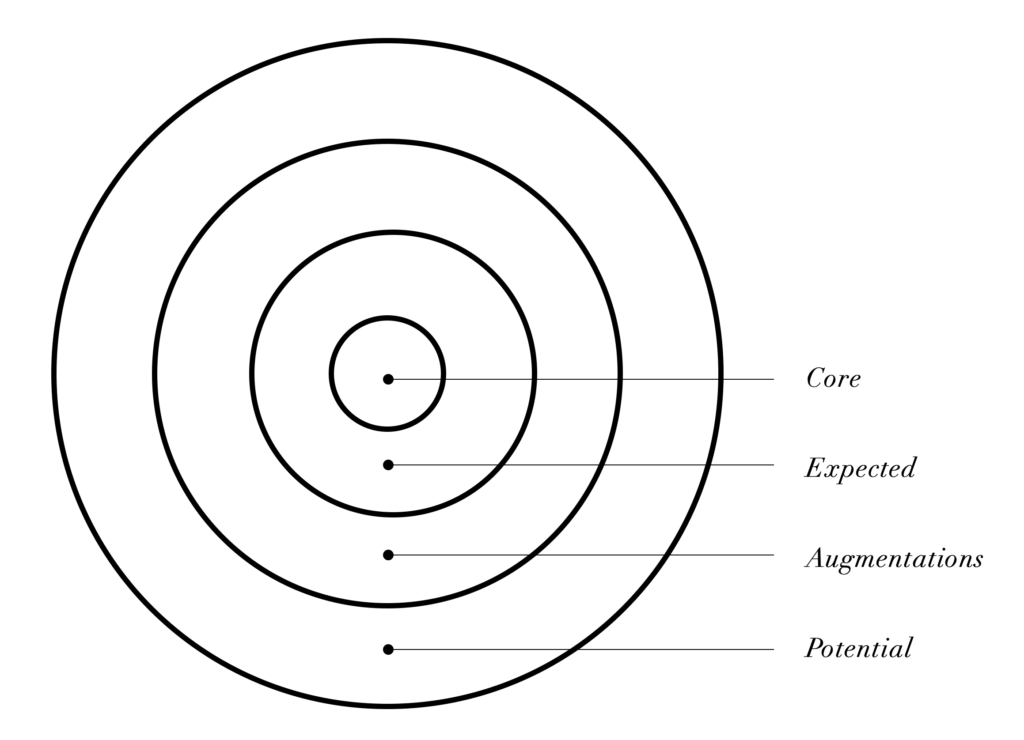Easy to use value proposition model

Do you know what it is - precisely - that makes you attractive to your existing and potential customers? If it takes you longer than 20 seconds to articulate it, then this easy to use value proposition model will help you to work on the appeal of your offer. Because without a value proposition that stands out in the market, there is no definitive reason to choose you.
Businesses that aren't clear about why they're different are left with only pricing as a tool to land new business. And that simply puts them in a race to the bottom. So use, and keep using, this handy model to help you describe and create compelling hooks so that you can start outperforming the market. This is part of Step 2, of our Stand Out, Grow Strong Plan.
Here's an easy way to approach a value proposition
Defining your value proposition helps you to understand what messages you should focus on, and which to avoid being sidetracked with. This model helps you separate the wheat from the chaff. Let's take a look at how it works. The model is made up of four concentric circles each designed to describe a different part of your offer. They are Core, Expected, Augmented and Potential.

CORE PROPOSITION
The innermost one, labelled Core, is where you define, at its most basic, what kind of business you are (if you’re writing a brand value proposition) or what kind of product you’re selling. If you were selling the latest iPhone, the centre would have word “phone”, because the core function of an iPhone is to make and receive phone calls. In our business we define our core as a brand and communications agency.
WHAT WOULD PEOPLE EXPECT?
The next circle is labelled Expected, and here you write all the things that someone might expect from a business or product like yours. There’s a lot that goes in to running a business, servicing customers and delivering a quality product. And although that can sometimes seem like an achievement in itself, it’s what customers expect. So, in this circle, write down all the things you do that people would expect to deliver as part of your service.
NOW FOR THE AUGMENTATIONS
The circle labelled Augmentations is where you distinguish what makes your business or product different from your competition. For most businesses this is where the head scratching happens. After all, we’re not all selling Teslas, or a brand new piece of technology that are clearly in a class of their own. If you do, congratulations, filling in this section will be easy.
The truth is, a lot of products and services are generic, at least at a functional level. But, maybe the words Sy Oliver wrote over 80 years ago can help here: “It ain’t what you do it’s the way that you do it”. Perhaps your culture is your differentiator. If so, define your culture – what makes it special. Perhaps you have a particular process that makes it easier for people to work with you. Or maybe you have a different view of the market. If so, how does that manifest itself? This part of the process is about focusing on that golden thread you use to stitch your unique offer to the market together.
AND FINALLY, YOUR POTENTIAL VALUE PROPOSITION
The outer circle is concerned with what you’ll be offering next – these will become your future augmentations. It’s important to do this exercise each year as part of the business planning process, as today’s augmentations, particularly at a product level, tend to end up in the expected circle over time. Just think again of the iPhone; all its original augmentations, apps, music, web browsing, GPS, touch screen are all expected now.
If you have defined your brand’s purpose, mission and vision, you will be able to quickly think of the kind of future products and services that would be appropriate for you to offer in future. Once you have a list you’re excited about, think about the problems each of the products or services solves for your customers.
Is the problem your customers face unworkable? In other words is it so bad that they simply can’t continue with the status quo?
Is the problem unavoidable? Are there regulatory or compliance requirements that will change the way they do business?
Is the problem urgent? Does it, or will it have the full focus of the company?
Is this problem underserved? Are solutions scarce in the market?
If you can answer yes to at least two of these questions, you have a solution the market will buy.
People buy your augmentations
When it comes to writing headlines for your website, social media, and collateral, lead your messaging with the value you bring, your augmentations. Even if they are service or culture based, wrap them up and articulate them as if they were a product. Give your approach a name. Your augmentations are what will differentiate you in the market, and help you attract the most relevant customers that are the right fit for your business.
Stand out and grow strong
To find out how your value proposition can help you stand out and grow strong, contact the Free team at hello@freepartners.com